The Philips PUS8079 is the brand's most affordable model featuring the multicoloured Ambilight backlighting, which has a dedicated fanbase. Given its budget price, this is a significant advantage. However, with a lower budget, certain compromises are to be expected. This TV is particularly suited for those who primarily watch content during the day. The main drawback is the contrast, which for a VA panel is quite low, and the luminance hovers around 200 nits, making it unsuitable for high-quality HDR content. However, there are notable positives. The tonal fidelity is relatively high, especially for content within the TV's capabilities, and the smooth gradation is impressive—hard to criticise. For casual gaming, low input lag is a plus. The operating system, though simple and sufficient for basic streaming like YouTube and Netflix, may fall short for users requiring more functionality. In conclusion, the Philips PUS8079 is ideal for those seeking an affordable TV with Ambilight, especially for daytime viewing, but may not be the best choice for high-end content or those seeking a more robust OS.
- Matching (Score)
- Our verdict
- TV appearance
- Where to buy
- Contrast and black detail
- HDR effect quality
- Factory color reproduction
- Color reproduction after calibration
- Smoothness of tonal transitions
- Image scaling and smoothness of tonal transitions
- Blur and motion smoothness
- Console compatibility and gaming features
- Input lag
- Compatibility with PC
- Viewing angles
- TV efficiency during daytime
- Details about the matrix
- TV features
- Apps
- Playing files from USB
- Sound
Philips PUS8079 vs XIAOMI A PRO 2026
Direct compare

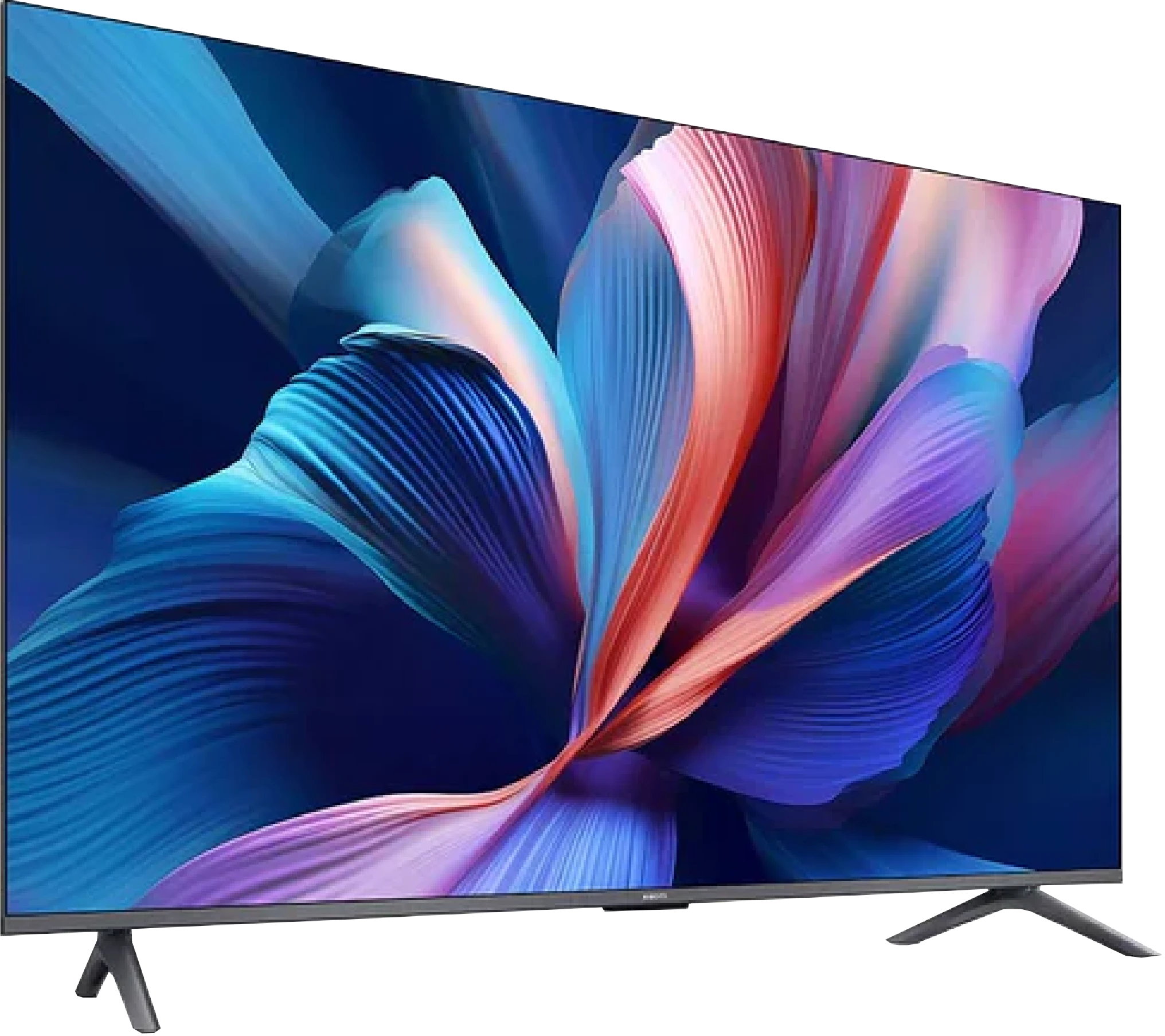
Panel type: LCD VA
Resolution: 3840x2160
System: Titan OS
Model year: 2024
Complete the survey to find out the result

Panel type: LCD VA
Resolution: 3840x2160
System: Google TV
Model year: 2025
Complete the survey to find out the result

Overall rating
4.6
5.6
Movies and series in UHD quality
4.3
6.0
Classic TV, YouTube
4.9
5.7
Sports broadcasts (TV and apps)
4.5
4.7
Gaming on console
6.2
6.2
TV as a computer monitor
2.0
2.0
Watching in bright light
2.6
4.9
Utility functions
4.7
6.1
Apps
6.2
9.6
Sound quality
5.1
5.0
Complete the survey to find out what fits your preferences
Advantages
Unique Ambilight system
Great fluidity of tonal transitions
Low input lag values
Good built-in file player
Support for DTS audio
VA matrix with good native contrast and decent black levels
Support for Game Boost mode at 120 Hz in 1080p and 1440p
Low input lag in 120 Hz mode
Google TV – a vast selection of apps and services
Wide color gamut coverage (about 94% DCI-P3)
Decent colors after SDR mode calibration
Support for popular audio formats (Dolby Atmos, DTS:X)
Large, clear remote control with a numeric keypad – convenient for seniors
Disadvantages
Low display brightness
Missing Dolby Vision
IR remote - requires aiming at the screen
TitanOs system - limited number of applications
Low brightness
No real support for HDR10+ and other more advanced HDR formats (e.g., Dolby Vision)
Significant limitations when working with PC – lack of chroma 4:4:4, heavy dithering, poor font readability
Poor viewing angles (typical for VA)
Clunky design, legs mounted in plastic with screws
Weird system issues – stuttering, errors with Miracast and audio switching
Upscaling and digital image processing are practically nonexistent
Very poor sound, practically no bass (we felt it performed worse than the "2025" model)
Our verdict
Xiaomi A Pro 2026 is a television that at first glance doesn’t reveal significant changes compared to its predecessor. Someone might even think it's just a copy of last year's model with a different sticker. And there’s some truth to that, as the main novelty, or rather the only clear difference, is the 120 Hz mode at lower resolutions. It must be acknowledged that this addition really does make a difference – it's not a solution for professional gamers, but rather a nod towards those looking for a smoother picture during casual gaming. This is where the A Pro 2026 can shine – with a simple, yet clever idea that sets it apart in the "super budget" segment. Unfortunately, when we begin to look at the television more broadly, enthusiasm quickly wanes. Even though the year has changed in the calendar, most of the issues known from the A Pro 2025 remain with us – the system can still experience strange stutters, and occasional bugs can be quite annoying. Additionally, there is a lack of any serious tools for digital image processing that worked quite decently last year. As a result, there are many construction limitations visible here that competitors at a similar price point are already trying to mask in some way. As for the quality of the image, we won't be dishonest with you either. Brightness levels of 200–300 nits don't stand a chance against more demanding materials. Yes, simpler streaming content can be watched, but with high-budget productions, it’s immediately clear why the television costs what it does. The impression of watching a flattened image stripped of details accompanies us virtually every time. And here we come to the crux of the matter. Xiaomi A Pro 2026 is a television for those who really do not require much. As a daily screen for series, news, or YouTube – it performs fairly well, especially thanks to its operating system, which is GoogleTV. Also, if someone is looking for budget equipment and additionally would like a taste of smoother gameplay in games thanks to the 120 Hz mode, they might even be satisfied. But anyone expecting at least average image quality, a stable system, and proper functionality will quickly notice that there are other budget models on the market that simply perform better.
TV appearance





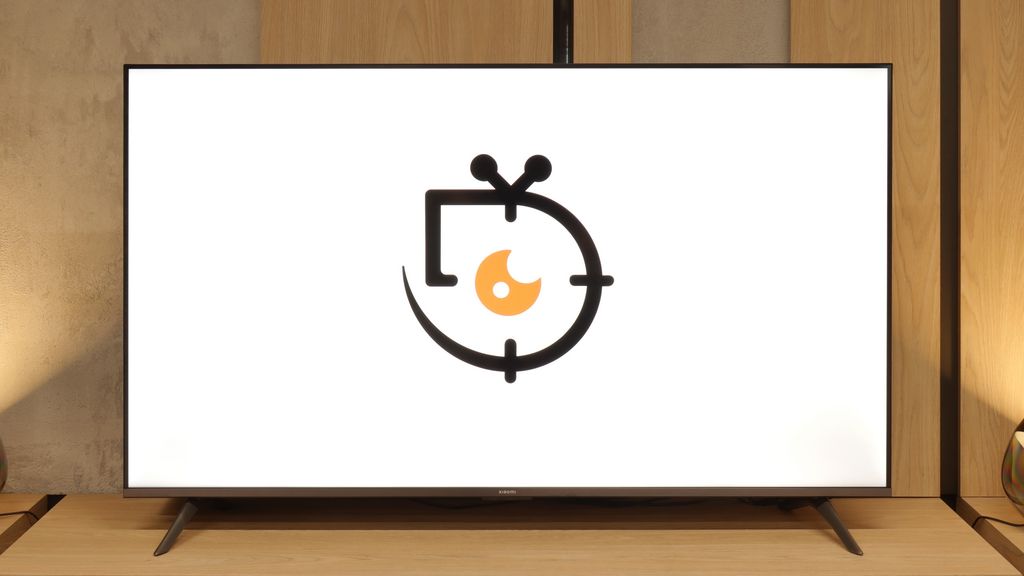
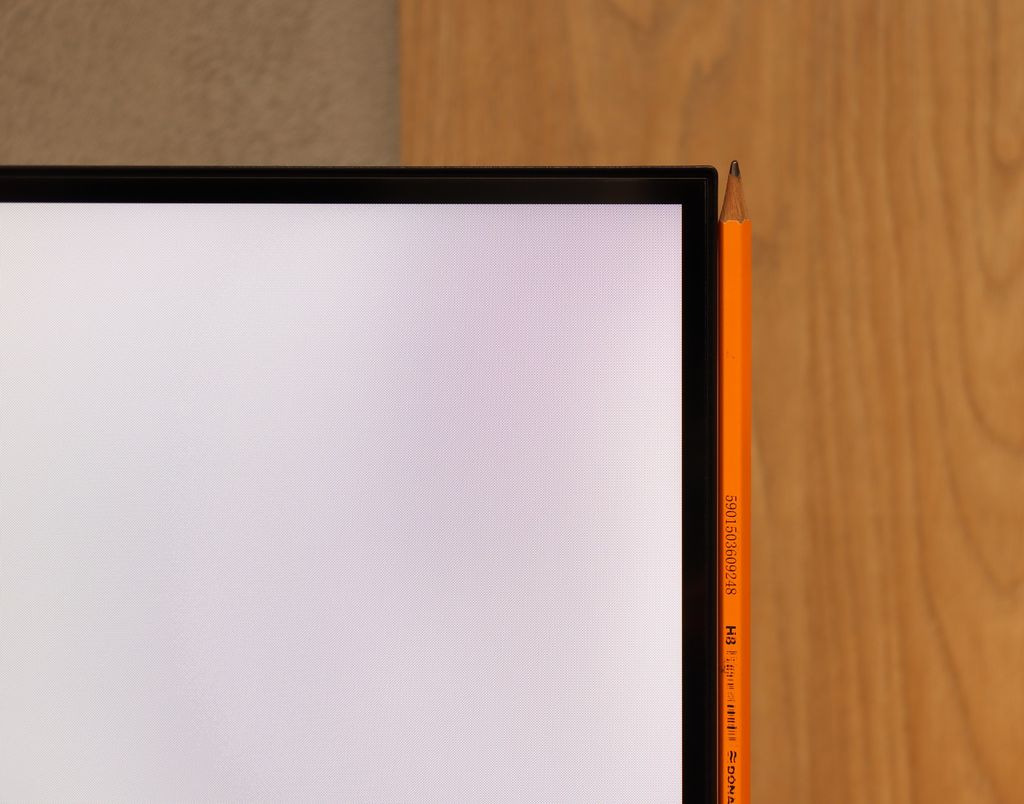
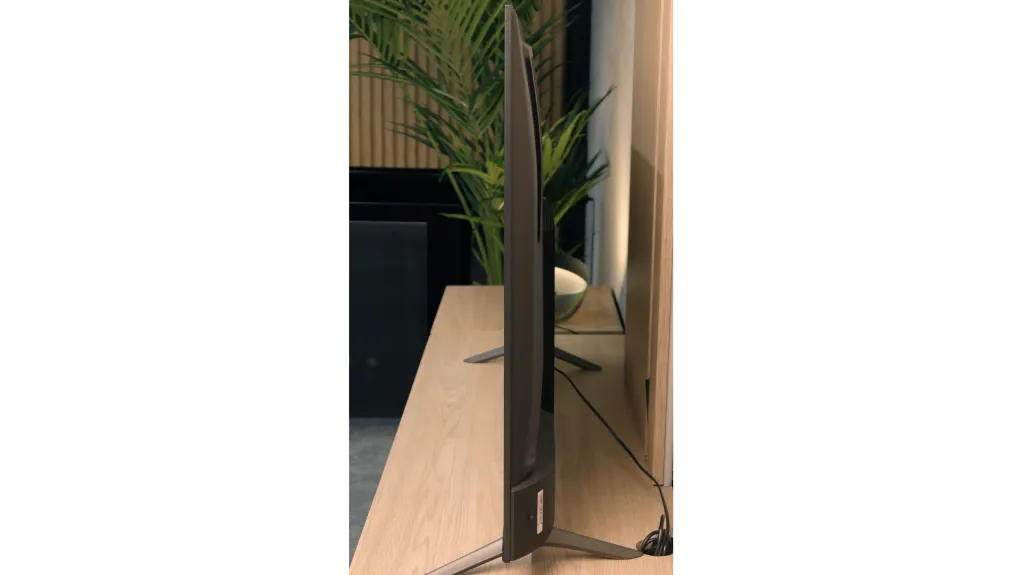
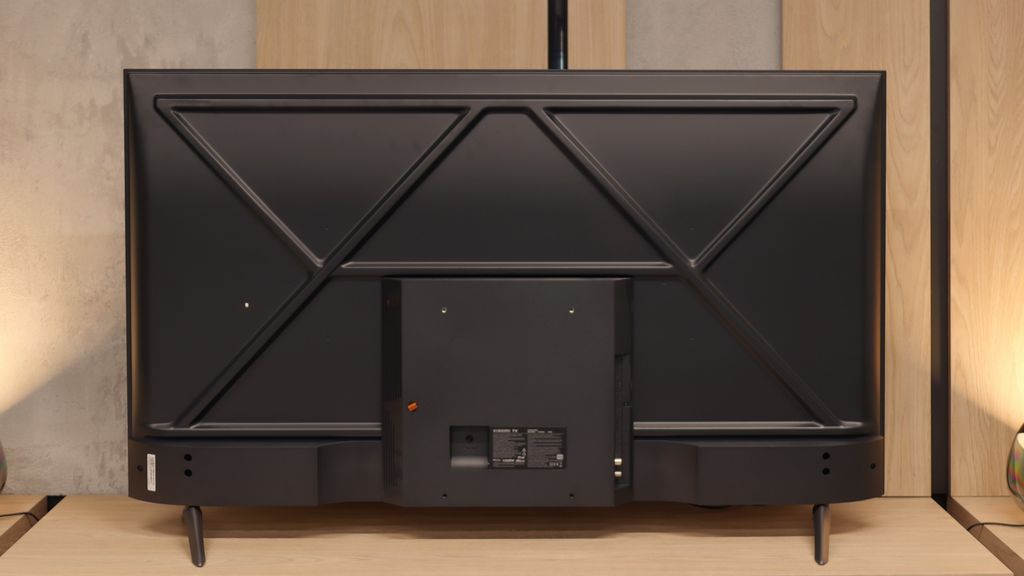
Contrast and black detail
4.3/10
6.1/10
Local dimming function: No
Local dimming function: No
Contrast:

Result
2,750:1

Result
2,550:1

Result
2,150:1

Result
2,350:1

Result
2,350:1

Result
5,000:1

Result
6,550:1

Result
7,300:1

Result
6,600:1

Result
4,900:1
Halo effect and black detail visibility:


The Philips PUS8079 is equipped with a VA panel, and the size tested was 43". It's important to note that the manufacturer may change the panel type depending on the screen size. While a VA panel typically provides good black levels, the performance here is predictable given the TV's budget price. With a contrast ratio of around 2300:1, this is one of the lowest results for a VA panel, as more advanced units can achieve 2-3 times better results in this regard. As expected for such an affordable device, the backlighting is direct (Direct), offering uniform illumination but lacking zone division, which is typical for low-end models. One positive point is the light separation observed in the test with the movie "Oblivion." However, this advantage fades when watching "Revenant," where the picture quality drastically drops, leaving the scene looking flat and disappointing. Ultimately, while the Philips PUS8079 offers basic features for its price, it falls short of being a viable option for home cinema enthusiasts.
One of the biggest advantages of even a budget construction like the Xiaomi A Pro 2026 is the use of a VA panel. It is responsible for quite decent contrast, which in our measurements fluctuated between 5000:1 and 7000:1. On the screen, this translates to a stable image with fairly deep blacks—something that is hard to find in competing models with IPS panels without local dimming. Xiaomi has also added the feature of global dimming for the entire panel. Sounds good, but... we advise you to turn it off right away. Why? Because the screen starts behaving very strangely in darker scenes—sometimes it dims so much that you can hardly see anything, and at other times it brightens up so much that the already dark blue black turns into a vivid blue. At that point, we had the impression that the TV was simply damaged. Fortunately, without this feature, the contrast presents itself really solidly. It is certainly not at the level of advanced TVs with local dimming, but in its price class, it will comfortably satisfy most users—especially if you are not watching in a completely dark room, but have at least a little light in the background, which effectively masks the imperfections of the "blue black."
HDR effect quality
2.9/10
4.1/10
Luminance measurements in HDR:

Result
179 nit

Result
177 nit

Result
202 nit

Result
164 nit

Result
193 nit

Result
220 nit

Result
248 nit

Result
322 nit

Result
315 nit

Result
326 nit
Scene from the movie “Pan” (about 2800 nits)


Scene from the movie “Billy Lynn” (about 1100 nits)


Static HDR10


Dynamic: HDR10+
Dynamic: HDR10+


HDR luminance chart:
XIAOMI A PRO 2026
HDR luminance
Philips PUS8079
HDR luminance
The Philips PUS8079 has a maximum brightness of just 202 nits in content with a wide tonal range, which is very low and makes it unsuitable for streaming movies and series in the highest quality. Additionally, using HDR with dynamic metadata doesn’t improve the situation, as the only HDR format available on this model is HDR10+, which is rare and has limited content support. The TV also uses WLED backlighting, which is not optimal and results in only 80% coverage of the DCI-P3 wide colour gamut. This limits the intensity of colours in HDR content.
If you are hoping for a cinematic HDR effect in the new Xiaomi A Pro 2026, you better quickly cool your expectations. This TV is simply too dark to fully convey the capabilities of contemporary movies or series prepared for the highest quality picture. Our measurements showed brightness in the range of 200-300 nits, which are values that suit SDR content more than ambitious HDR productions. In practice, this means that most movies look okay, but they definitely won’t give you the "wow" effect that other TVs deliver. Fortunately, not everything is lost – a plus here is the use of the PFS LED filter, which is a solution similar to the quantum dot known from QLEDs. Thanks to this, the coverage of the DCI-P3 color gamut reaches about 94%, resulting in vibrant, saturated colors in the vast majority of materials.
Factory color reproduction
1.8/10
3.5/10


Factory Mode
After calibration


Factory Mode
After calibration
The best factory mode for colour reproduction and fidelity to the director's vision on the Philips PUS8079 was the "Film" mode. However, this setting displayed significant discrepancies between the filmmaker's intent and the actual output. In both SDR and HDR materials (with HDR being less affected), the white balance was off, showing a blue tint similar to store displays, rather than pure whites. When it came to SDR materials, gamma was notably lowered, cutting into the already limited contrast and brightening the overall image. The EOTF curve in HDR content also showed a significant drop below the reference line, making HDR materials appear even darker. The colour accuracy in both SDR and HDR modes was poor, with high deltaE values indicating that the colours were far from their intended representation.
What we saw in Filmmaker mode surprised us greatly – and unfortunately not in a good way. The mode advertised as Hollywood standard resembled more of a display in a store window. The white balance was shifted towards blue, leading to huge color errors and the effect of washed-out scenes in SDR content. It was a little better, though far from perfect, in HDR materials. There, problems were also visible – color saturation and the entire palette consistently shifted towards cooler tones, which made the image appear more artificial and cold rather than cinematic. In other words: even in Filmmaker mode, which should be the showcase of this television, we got a result far from expectations.
Color reproduction after calibration
4.8/10
7/10




Fortunately, Philips incorporates advanced image correction tools across its televisions. SDR content benefited the most from these adjustments, with significant improvements in deltaE errors, white balance, and gamma. While the image still isn’t perfect, it is much more watchable, making it easier on the eyes during movie or series viewing. HDR content, however, was more challenging due to the television’s low luminance. While the EOTF curve and white balance improved, the corrections weren’t as effective as with SDR materials. It’s important to note that each unit may have different errors, some larger and some smaller, but the adjustments made were a step in the right direction.
Even though Xiaomi is not a brand associated with top-of-the-line televisions, it must be acknowledged that even in a budget model like the A Pro 2026, the manufacturer left quite a few calibration settings. After a few adjustments, the SDR picture gained a completely new character. The colors stopped veering into blue tones, the whites became more natural, and most errors dropped to a practically invisible level. As a result, SDR content looked very good, surprisingly so for this price range.
It was somewhat different with HDR material. Here, it was immediately noticeable what we had already mentioned - the overexposure of bright scenes and issues with balance control. Calibration only helped partially because the limitations of the panel itself played a role. However, it should be emphasized that in the case of SDR, the television transformed beyond recognition, and in a decidedly positive direction.
Smoothness of tonal transitions
7.5/10
9.3/10












The tested television excels in the smoothness of tonal transitions, performing admirably in nearly every scene. While there are slight shortcomings in darker areas, particularly near blacks, the overall performance remains impressive, especially considering the device’s affordability.
One noticeable drawback, however, is the visible backlight bleed in the corners, a common issue with panels in budget-friendly models. Despite this, the television’s strong performance in tonal transitions significantly outweighs this minor flaw, making it a compelling option for its price range.
The television really handles color blending well, and in most scenes, it's hard to find any imperfections. This is best seen in the bright parts of films, where tonal transitions look almost perfect, making the image smooth and natural. Darker scenes are a bit worse; in them, characteristic banding can be noticed. Fortunately, this is not a flaw that stands out and will remain virtually unnoticed by most viewers.
Image scaling and smoothness of tonal transitions
6.3/10
3/10
Smooth transition function

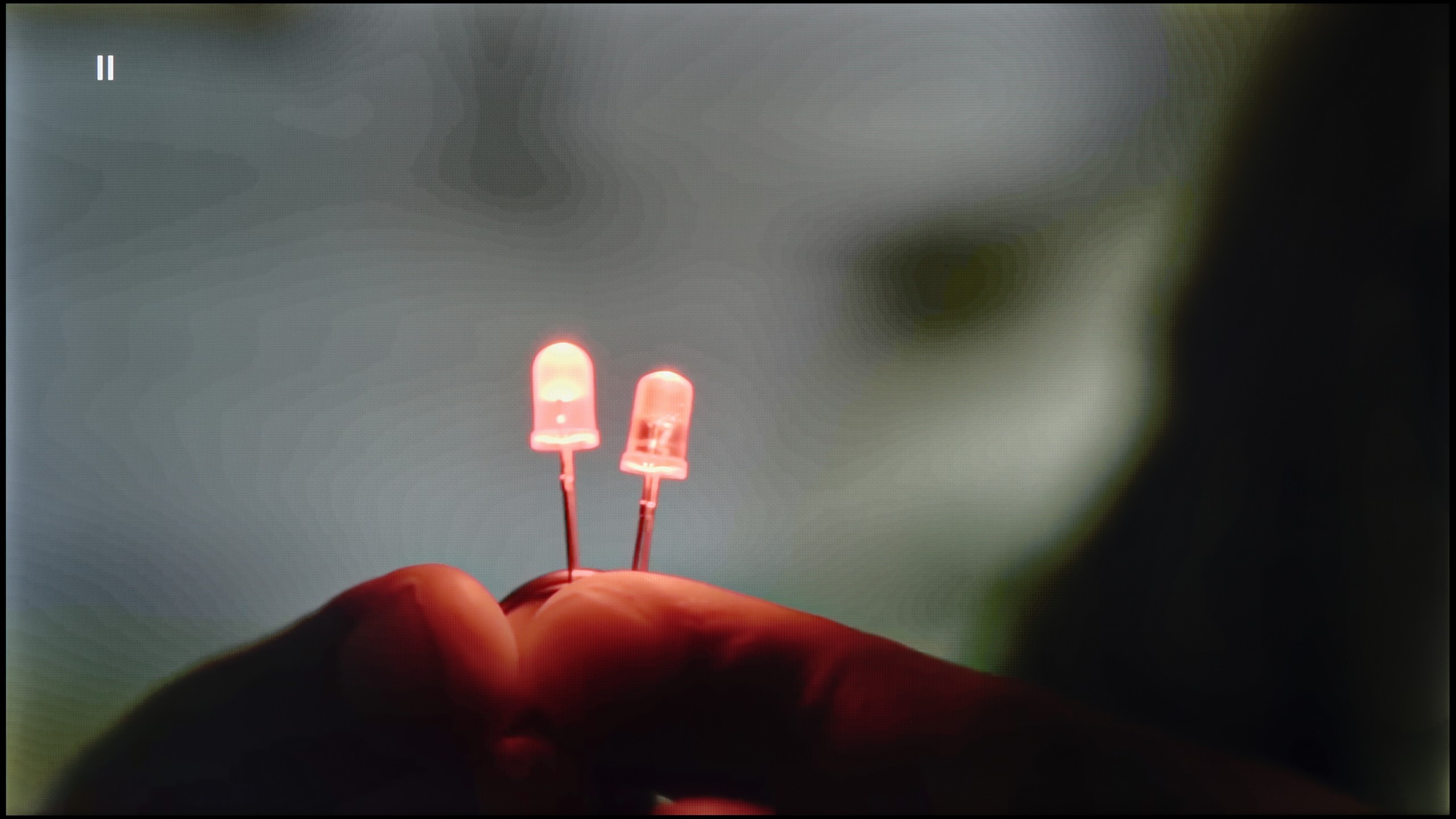
Image without overscan on the SD signal


Let us revisit the topic of tonal transitions, this time in the context of overall image quality enhancement. As shown in the photo on the left, the gradation improvement feature delivers excellent results. It provides multiple settings, each offering noticeable benefits without softening the film grain effect. Once again, it must be emphasised that this feature is the standout advantage of the tested television.
On the other hand, the television’s performance in image scaling leaves much to be desired. Fine details often appear heavily jagged, with a noticeable white halo around figures. Additionally, the significant artificial sharpening detracts from the overall image quality.
Upscaling and digital image processing in the Xiaomi A Pro 2026 are not among the strengths of this model. One might expect that since the TV wasn’t designed to achieve record brightness levels, the manufacturer would have opted for a more robust processor and a set of features that would "enhance" lower quality images. Unfortunately – we were also quite disappointed here. On the plus side, there is reasonably decent upscaling that handles HD materials and elevates them to 4K in an acceptable manner. However, this is where the list of advantages ends. The TV does not offer any features to improve tonal transitions or smooth out digital imperfections, so in most cases, we get a raw image, exactly as we deliver from an external source. On a large screen, this lack of support makes lower quality materials look simply bland. An additional problem is the phenomenon of overscan. When watching older materials, it sometimes happens that part of the image is cut off, which only intensifies the impression that Xiaomi still has a lot to catch up on in this category.
Blur and motion smoothness
4.2/10
4.5/10

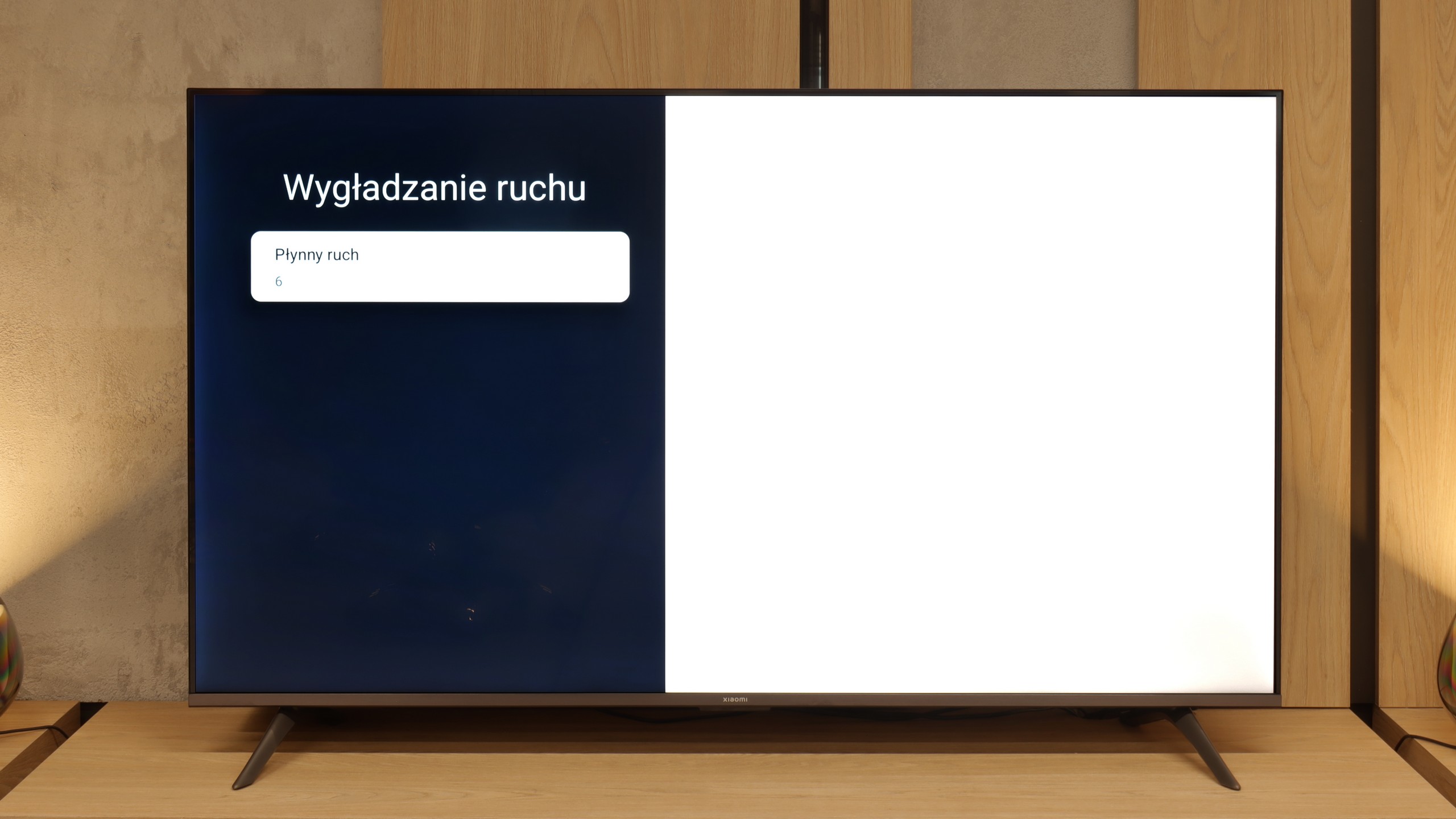
Blur (native resolution, maximum refresh rate):






Blur (BFI function enabled):



Smużenie ():
Smużenie (1440p@120Hz):



This paragraph will be notably brief due to the absence of even basic motion-smoothing functionality, which is unsurprising given the device's budget-oriented nature. The VA panel used here is not known for exceptional sharpness and is instead associated with high contrast and slower response times, as confirmed by the matrix analysis results. Photos captured during fast motion reveal typical motion blur for this type of panel. While not ideal, the television could be conditionally suitable for watching sports, though viewers should expect less-than-optimal motion clarity. Additionally, films may exhibit noticeable stuttering due to the lack of any motion-smoothing features, even basic ones.
The motion fluidity in the Xiaomi A Pro 2026 is an interesting compromise that results from the hybrid matrix used here. At the native resolution of 4K, the maximum refresh rate is 60 Hz – sufficient for those who mainly watch movies and series. It is precisely for them that the manufacturer added a motion smoother, allowing users to adjust the image to their own preferences – one can opt for greater fluidity or leave the more "cinematic" frames depending on the settings.
Console compatibility and gaming features
4.7/10
3.6/10
- ALLM
- VRR
- VRR range48 - 60Hz
- Dolby Vision Game Mode
- Correct implementation of HGIG
- 1080p@120Hz
- 1440p@120Hz
- 4K@120Hz
- Game bar

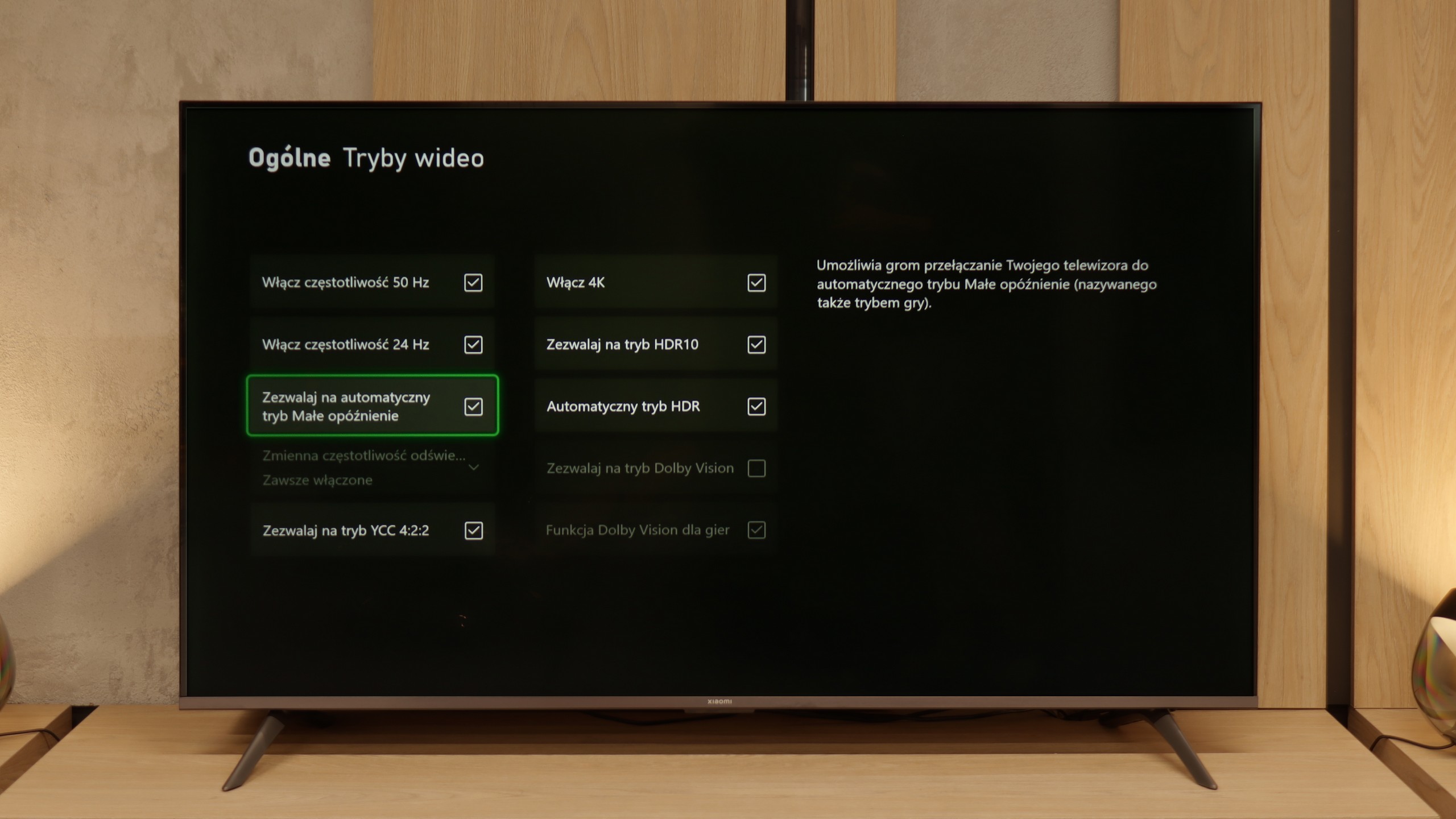

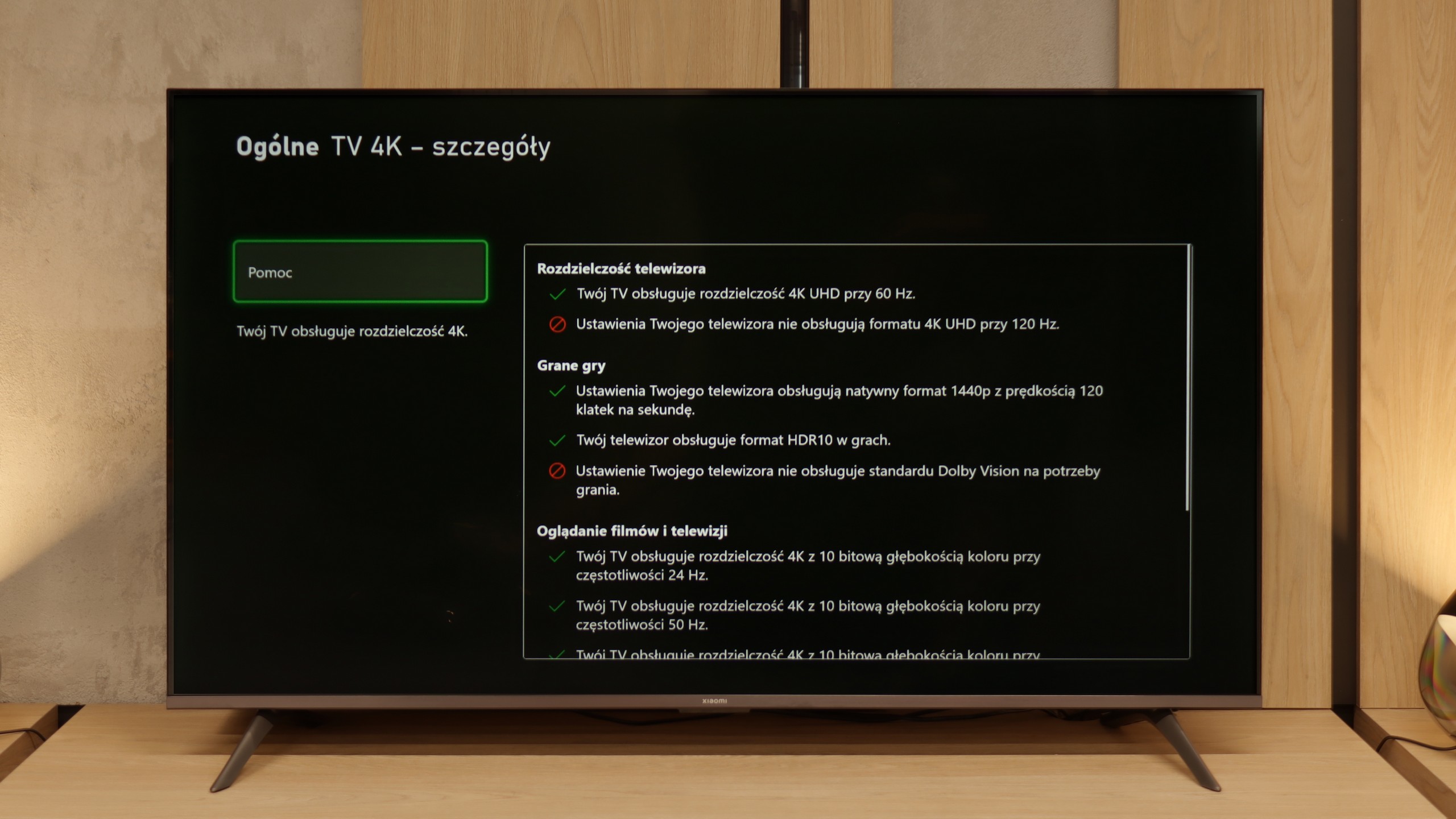

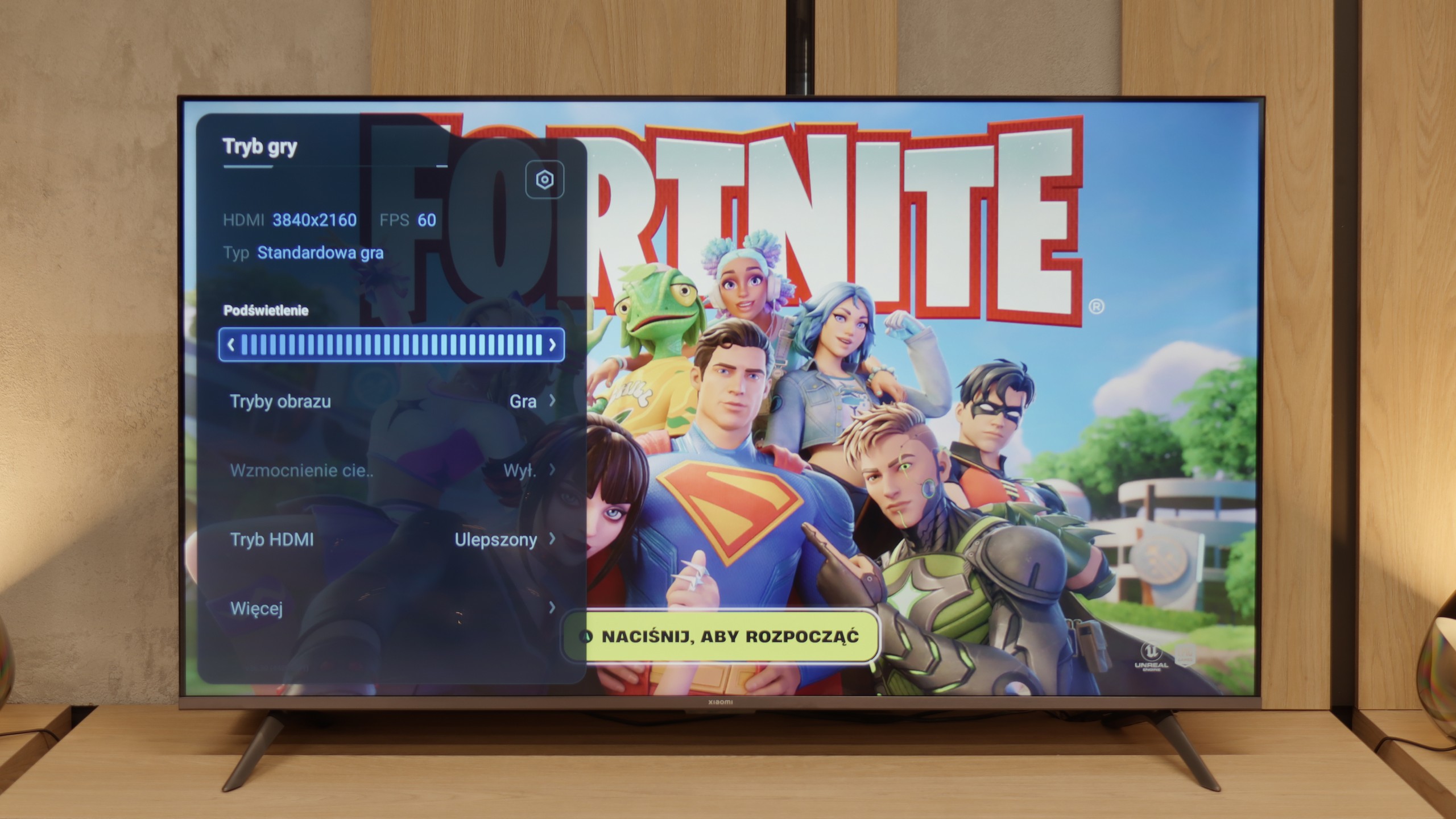

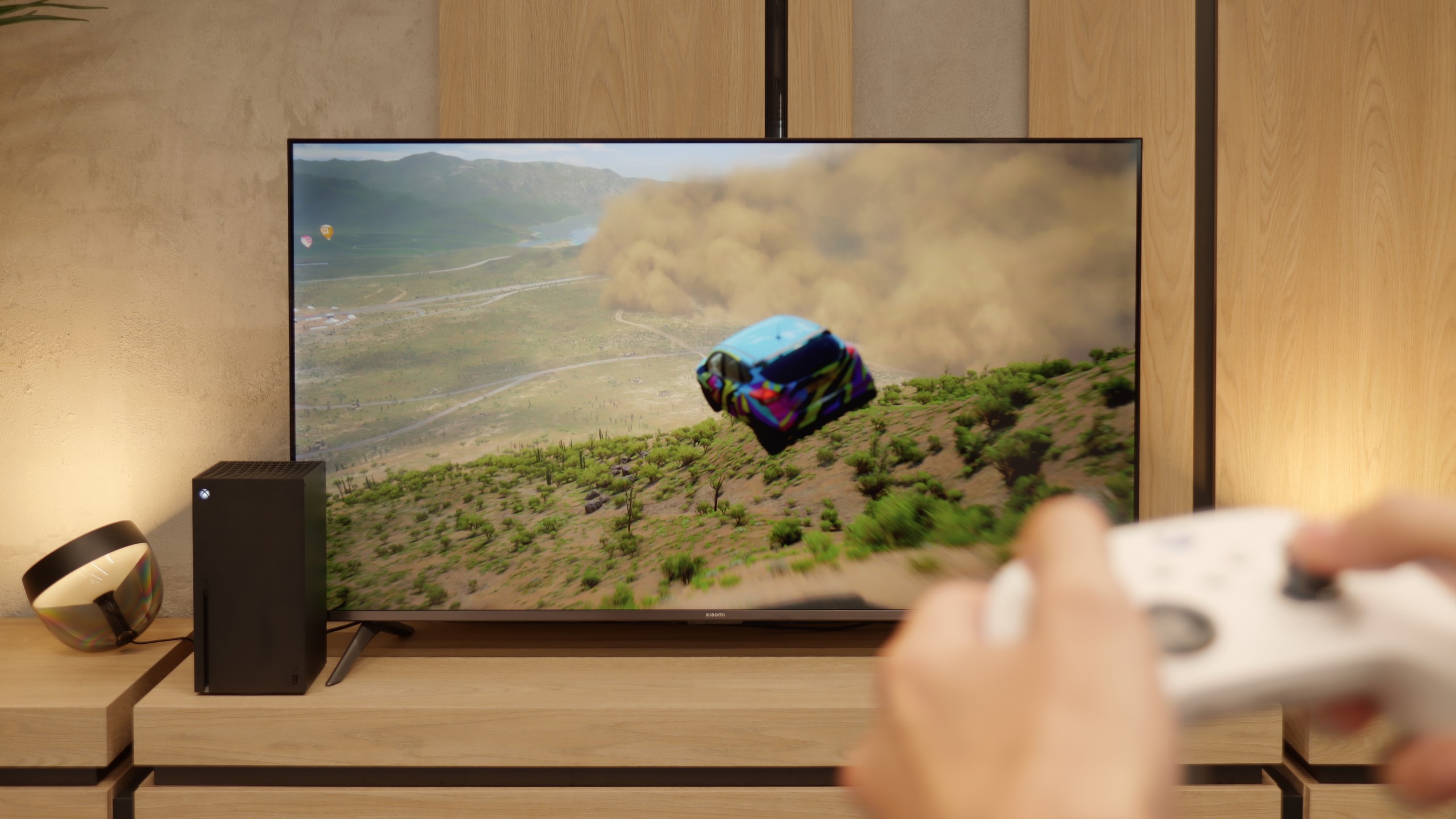
The Philips PUS8079 provides only basic gaming features, including ALLM, VRR, and a Game Bar. The key highlight is the inclusion of dynamic frequency adjustment, which ensures a smooth image with minimal screen tearing—an impressive offering for this price range.
A notable benefit for gamers is the presence of the Game Bar, allowing adjustments to be made "on the fly" without needing to exit the game. Importantly, this feature retains options found in higher-end models, such as shadow enhancement for improved visibility in darker areas and a colour filter designed to assist gamers with visual impairments.
Indeed – since Xiaomi has added the "Game Boost 120 Hz" feature here, one might expect that they would follow up with a solid gaming package. Unfortunately, reality quickly dampens that enthusiasm. Aside from this mode (which, it must be said, is a great addition in a budget build), we have just a rather bizarre player panel. It's hard to call it a fully-fledged "game bar" – it's more of a simple overlay on the TV Menu with limited options. And that would be about it. There is no ALLM, so the TV won't automatically switch to game mode. There is no VRR, so you can forget about smooth frame synchronization. We also won't find support for Dolby Vision in games or the HGiG format, which are becoming increasingly standard on consoles. In short: apart from Game Boost 120 Hz, which does indeed make playing more enjoyable in 1080p or 1440p, the Xiaomi A Pro 2026 offers nothing particularly appealing to gamers.
Input lag
9.9/10
9.5/10
SDR
HDR
Dolby Vision
The results of the input lag measurements in PUS8079 are at a high level, regardless of the signal or resolution. All gamers will certainly appreciate the manufacturer's efforts, as a game running at 4K60Hz with HDR will have only 13 ms of latency, which is practically unnoticeable even in online games.
The input lag on the Xiaomi A Pro 2026 is quite decent and certainly not its weak point. The best results were achieved in 1080p@120 Hz and 1440p@120 Hz modes – there the TV drops below 10 ms, which can easily be called a phenomenal result and sufficient even for more demanding gamers. The situation changes with 60 Hz content – the input lag then rises to around 25 ms. While these may not be the best values on the market, they will be fully acceptable for casual gaming or for an evening console session. Especially since in most cases it is still worth enabling the 120 Hz mode, which is the most beneficial for gamers.
Compatibility with PC
2/10
2/10

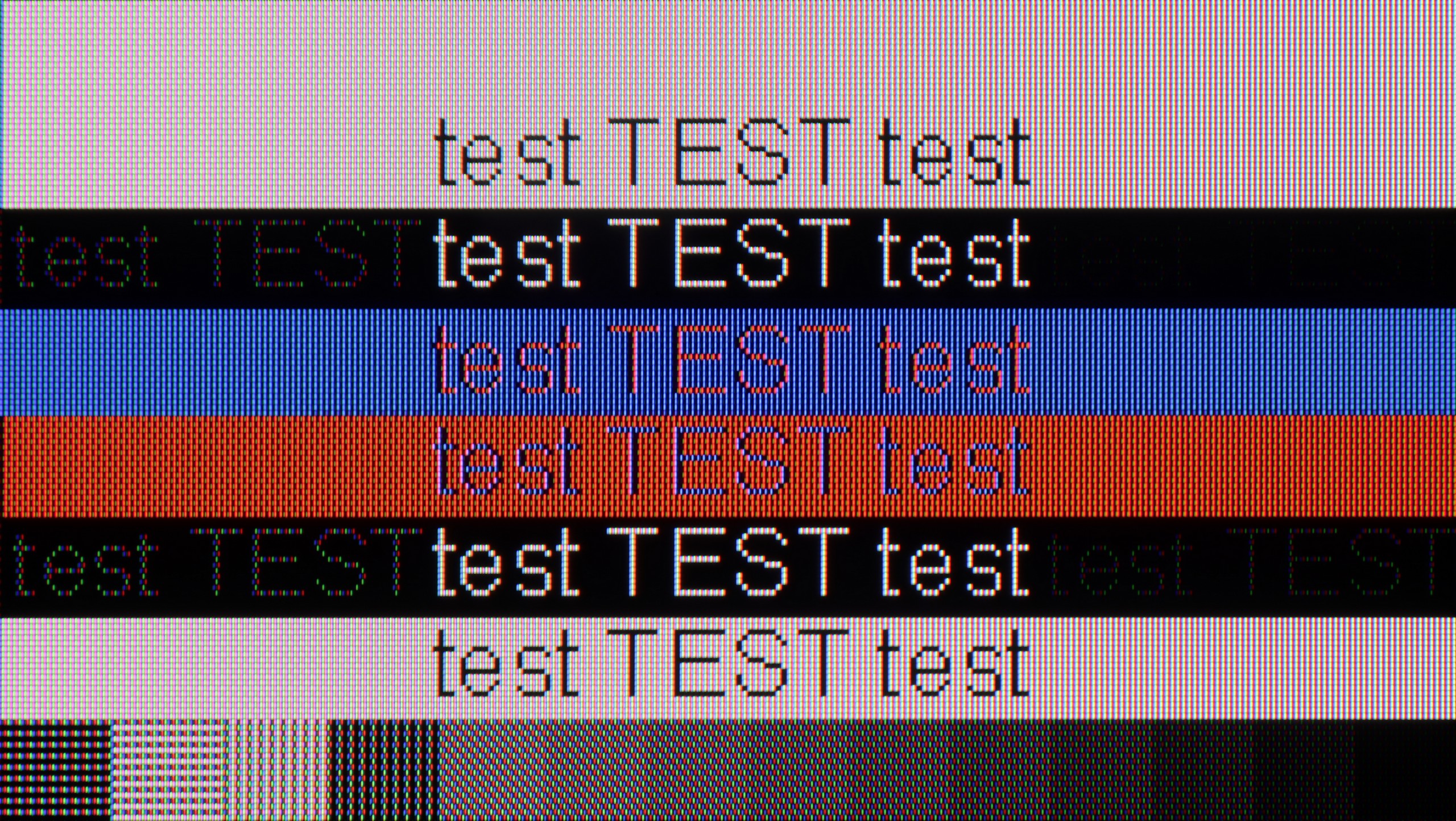
When connecting the Philips PUS8079 to a computer to use it as a monitor, it delivers a low input lag of 14 ms, which is barely noticeable in terms of mouse-screen-eye interaction. However, the television falls short in font clarity, making it unsuitable for use as a monitor. The issue lies in the phenomenon known as dithering, which becomes apparent in the display of grey text. Not all subpixels are lit on adjacent pixels as they should be, resulting in blurry text that severely impacts readability and makes extended work impractical.
Xiaomi A Pro 2026 as a computer monitor? There's no beating around the bush – it's very bad. While you can still utilize the 120 Hz mode in lower resolutions for gaming, the TV is completely unsuitable for everyday work. It lacks full support for chroma 4:4:4, so fonts are blurry and sometimes even rainbow-colored. Additionally, there's strong dithering that makes the image look uneven – some pixels shine brighter, others dimmer, and vertical lines can even break apart. In practice, this means that text (especially colored and on a dark background) becomes difficult to read. Light text manages to hold up somewhat, but it's hard to talk about any comfort here. In this category, we give Xiaomi A Pro 2026 a rating of 2/10 (+1 for the additional high refresh rate mode), and there's really no point in dwelling on this any longer.
Viewing angles
3.8/10
3/10
One of the most notable and frequent drawbacks of VA panels is their limited viewing angles, especially in models without angular coatings that could improve performance in this area. Interestingly, the Philips PUS8079 performed somewhat better in this regard compared to the PML9009 we recently tested. However, even with this slight improvement, a small deviation from the centre still leads to noticeable colour degradation and a significant reduction in contrast.
The Xiaomi A Pro 2026 uses a VA panel, which immediately suggests that viewing angles are not its strong suit. Looking at the screen from the side, we quickly notice a loss of quality – colors noticeably fade, and the whole image appears washed out. The drop in brightness may not be as drastic as in some constructions based on similar technology, but that doesn’t change the fact that this is clearly a weak point of this model. If we plan to use it as a large, cheap screen for the living room, we have to take this limitation into account.
TV efficiency during daytime
2.6/10
4.9/10




Matrix brightness
Average luminance SDR
XIAOMI A PRO 2026: 334 cd/m2
Philips PUS8079: 192 cd/m2
During our test sequence, we also evaluated the television’s performance in daytime viewing conditions, which we recommend given the insufficient contrast for darker environments. Unfortunately, the results were disappointing. The satin coating didn't help much, and combined with the television's low luminance, this effectively rules it out for use in a bright, sunny room.
Xiaomi A Pro 2026 performs quite well during the day. The display has a satin finish that can somewhat reduce reflections, so the colors do not lose their vibrancy, even when the room is bright. Just keep in mind that this is not a super-bright screen – the average brightness is around 350 nits. In a regular, moderately sunny living room, it's sufficient, but if you have large windows that let in a lot of sunlight, it may simply be difficult without shades or curtains.
Details about the matrix
Subpixel Structure:

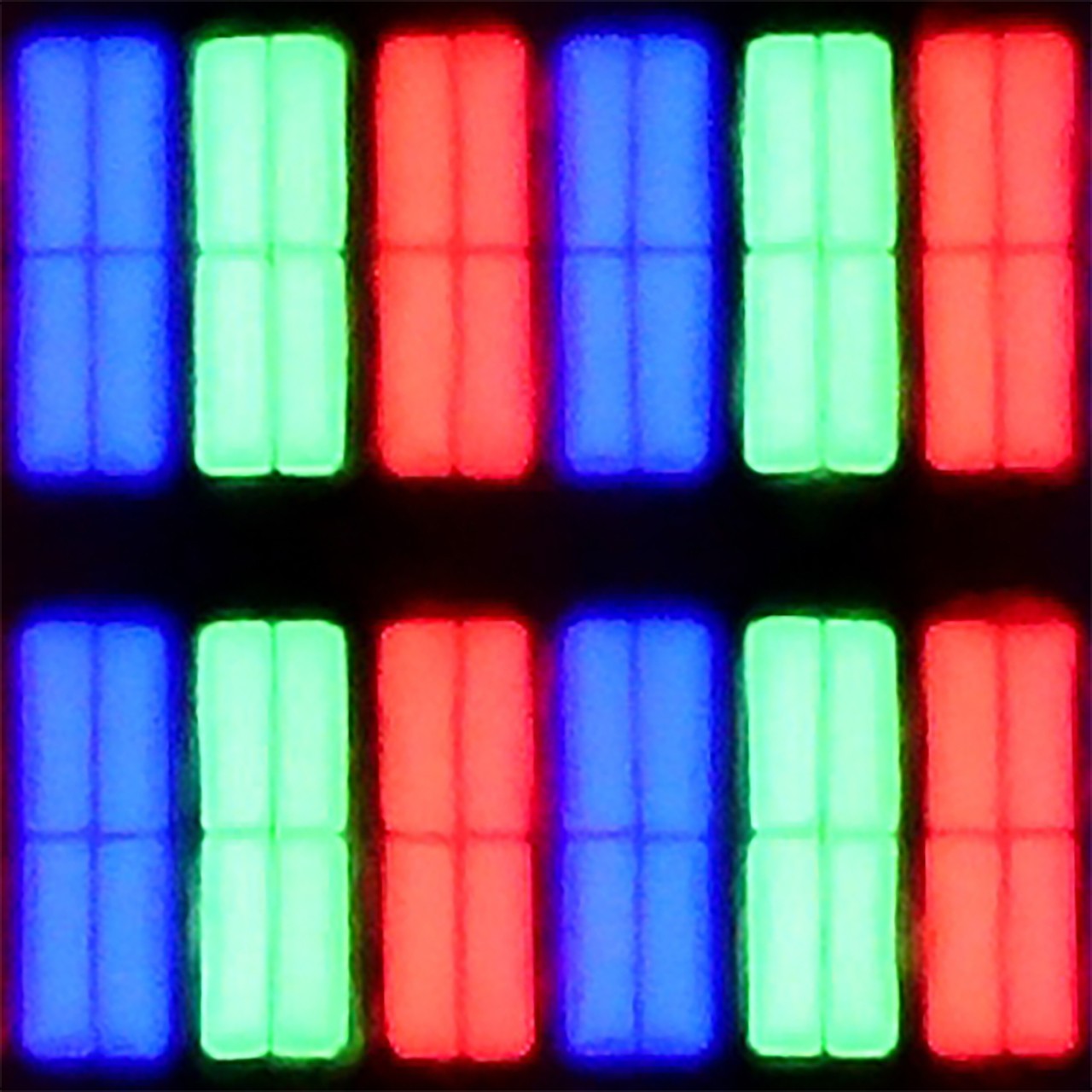
Panel uniformity and thermal imaging:


Philips PUS8079
XIAOMI A PRO 2026
TV features
4.7/10
6.1/10
- HDMI inputs3 x HDMI 2.0, 0 x HDMI 2.13 x HDMI 2.0, 0 x HDMI 2.1
- Other inputsRCA (Chinch)
- OutputseARC (HDMI), ARC (HDMI), Mini-Jack (Headphones)Toslink (Optical audio), eARC (HDMI), ARC (HDMI), Mini-Jack (Headphones)
- Network InterfacesWi-Fi 2.4GHz, Wi-Fi 5GHz, Ethernet (LAN) 100MbpsWi-Fi 2.4GHz, Wi-Fi 5GHz, Ethernet (LAN) 100Mbps
- TV receptionDVB-T, DVB-T2, DVB-S, DVB-S2, DVB-CDVB-T, DVB-T2, DVB-S, DVB-S2, DVB-C
Classic features:
- Recording to USB (terrestrial TV)
- Recording programming
- Picture in Picture (PiP)
- RF remote control (no need to aim at the screen)
- Backlit remote control
- Teletext
- Audio only mode
- Bluetooth headphones support
- Simultaneous Bluetooth headphones & TV audio
Smart features:
- AirPlay
- Screen mirroring (Windows Miracast)
- Voice search
- Voice search in native language
- Ability to connect a keyboard and mouse


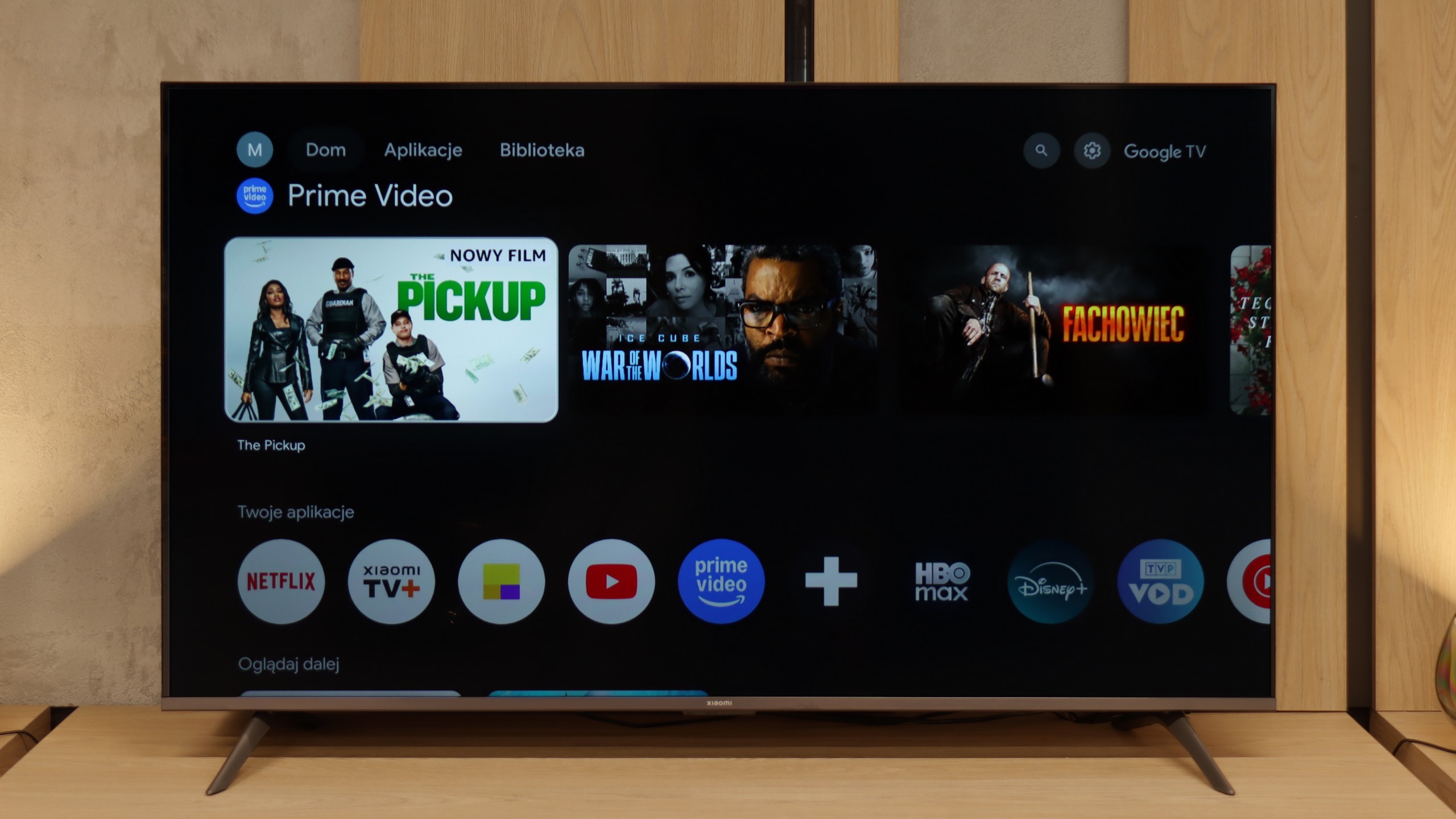
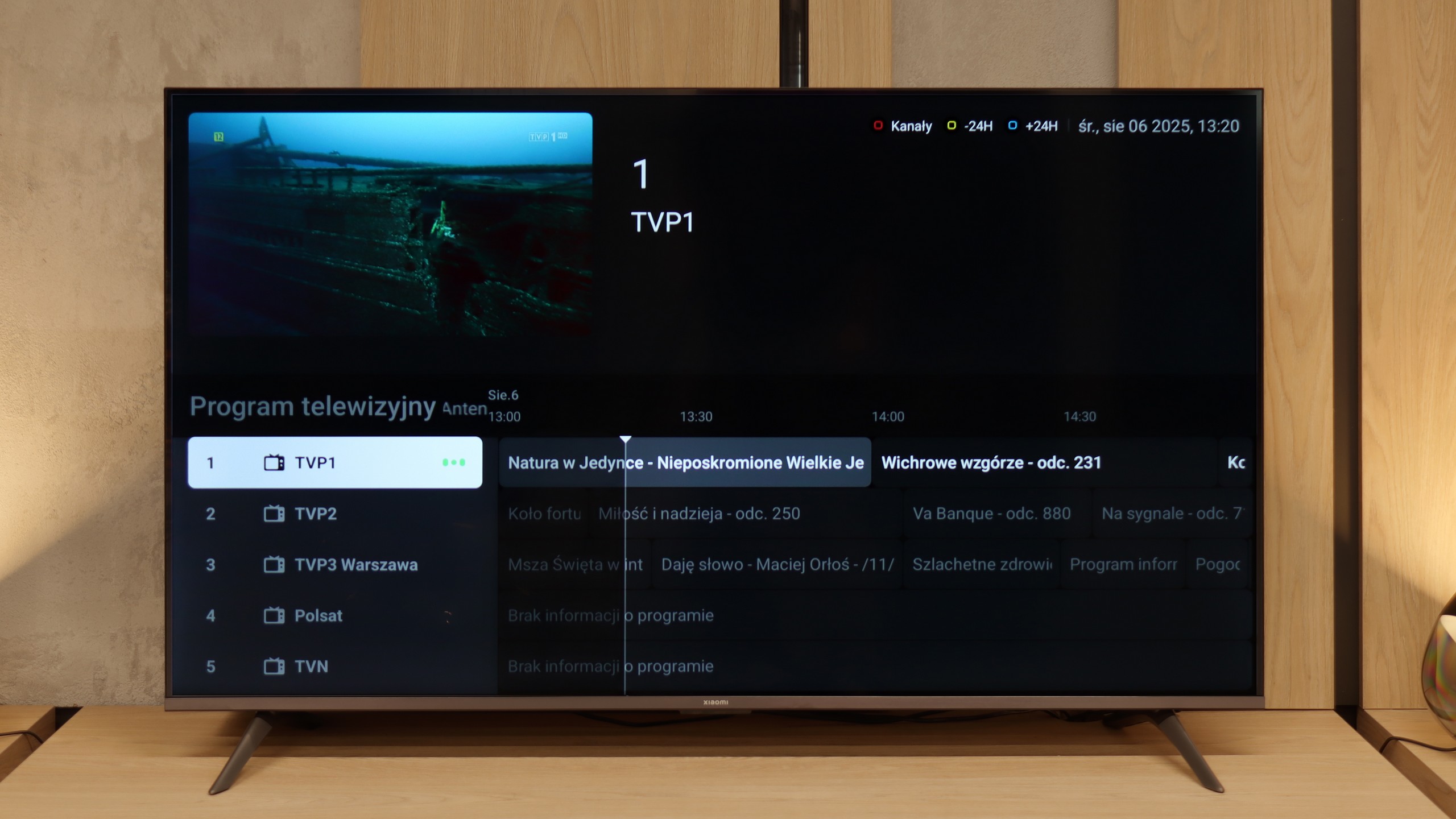
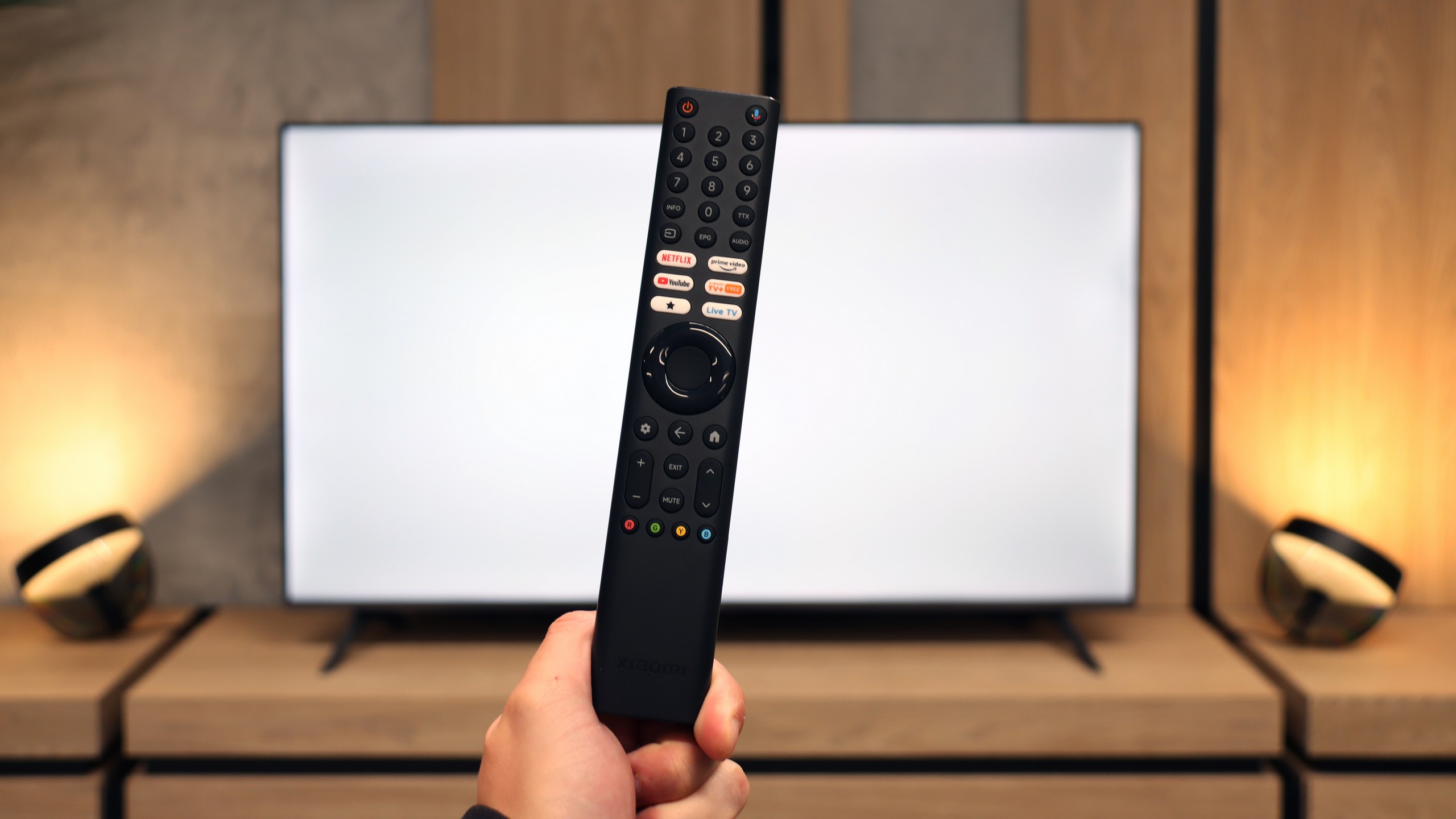
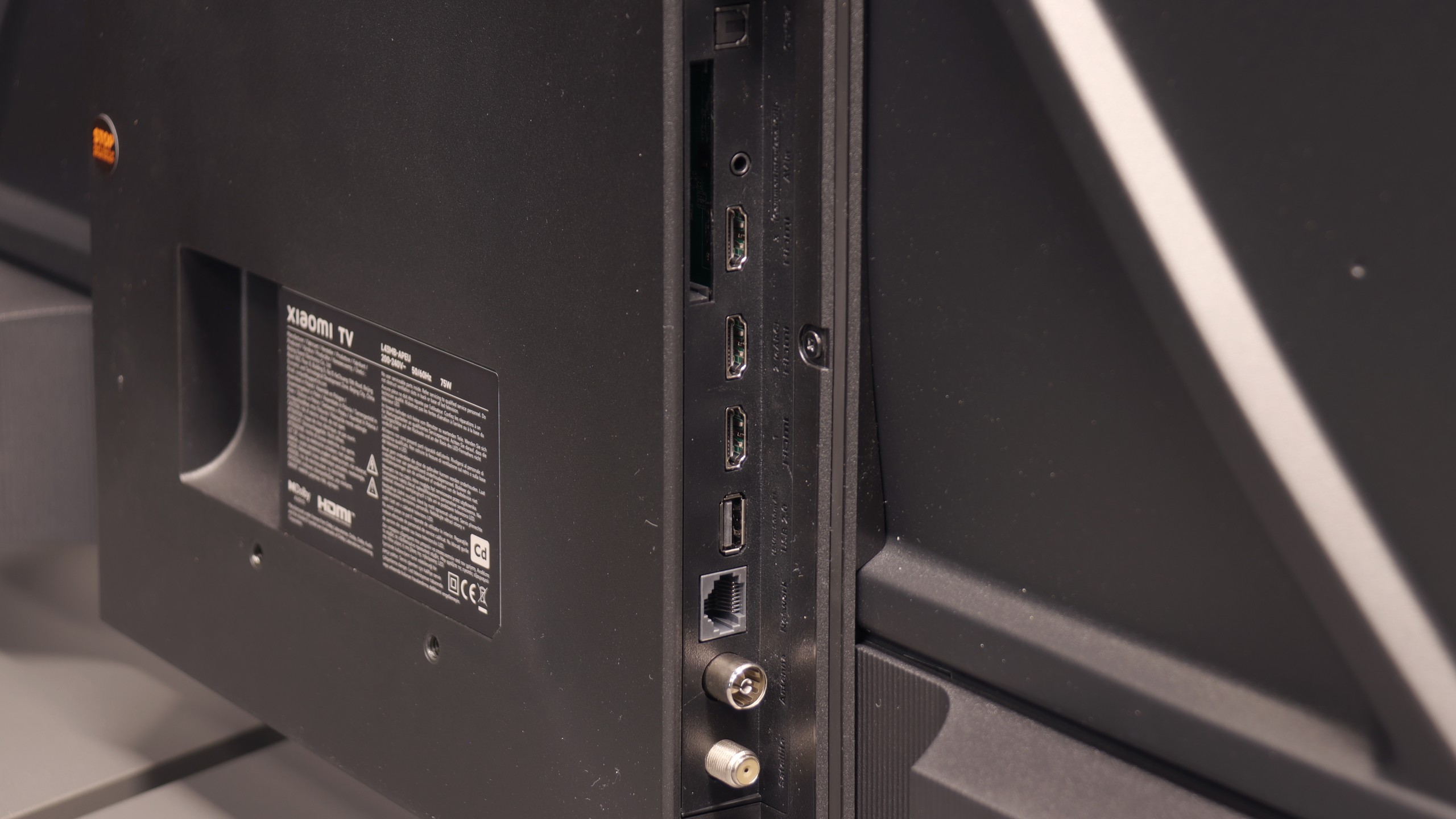
One of the standout features of Philips televisions is, without a doubt, the multicoloured Ambilight backlighting. Positioned on the back of the device, this system displays colours that adjust to what’s happening on screen, creating a more immersive viewing experience. The operating system, TitanOS, powers the television, but it is more closed and limited compared to Google TV-based models from the brand. A significant drawback is the lack of essential apps, such as Apple TV, MAX, Canal+, or Player. Additionally, TitanOS' closed nature restricts basic functions like programming recordings or recording to USB. Apple device users may also be disappointed by the absence of AirPlay, which allows easy screen streaming. On the plus side, it’s possible to connect a keyboard and mouse for smoother navigation through the menu. While headphones can be connected, they must be wired, and sound can also be played through the TV’s speakers. Another inconvenience is that the TV uses IR for control instead of Bluetooth, which feels outdated in today’s tech landscape.
In summary: TitanOs has quite a few "buts," especially for individuals who use many streaming platforms. Instead, it is an option for those who limit themselves to the so-called holy trinity of Netflix, YouTube, and CDA.
SmartTV - Google TV
The biggest advantage of the Xiaomi A Pro 2026 is the Google TV system. It's what gives the TV a second life – you can run practically any app on it, from Netflix and YouTube to music services and even lesser-known programs from the Google Play Store. We are not limited to just what the manufacturer has pre-installed, as is the case with other budget TVs. Additionally, we have AirPlay, voice search through Google Assistant, and even integration with Gemini. We did experience some minor hiccups – for example, casting from a laptop didn’t always work – but despite such shortcomings, Google TV is a huge plus in this setup.
Classic TV Functions
The Xiaomi A Pro 2026 can be referred to as a "senior-friendly" TV. The large remote control with a numeric keypad and a fair number of physical buttons makes it intuitive to operate. Support for teletext and a clear EPG interface make using classic TV functions easier. We won't find many advanced features like USB recording or PiP, but the presence of an analog headphone jack can be surprisingly practical for some users. It gives the impression that this is a set of features tailored to the needs of the most traditional viewers.
System Stability
However, not everything works as it should. During testing, we encountered annoying system stutters, problems with Miracast, and issues when switching audio sources. There were even times when it was necessary to reset the TV by unplugging it. This just shows that although Google TV offers huge possibilities, stability in such a budget-friendly setup can still be very problematic.
Playing files from USB
8/10
6.8/10
Supported photo formats:
Maximum photo resolution:

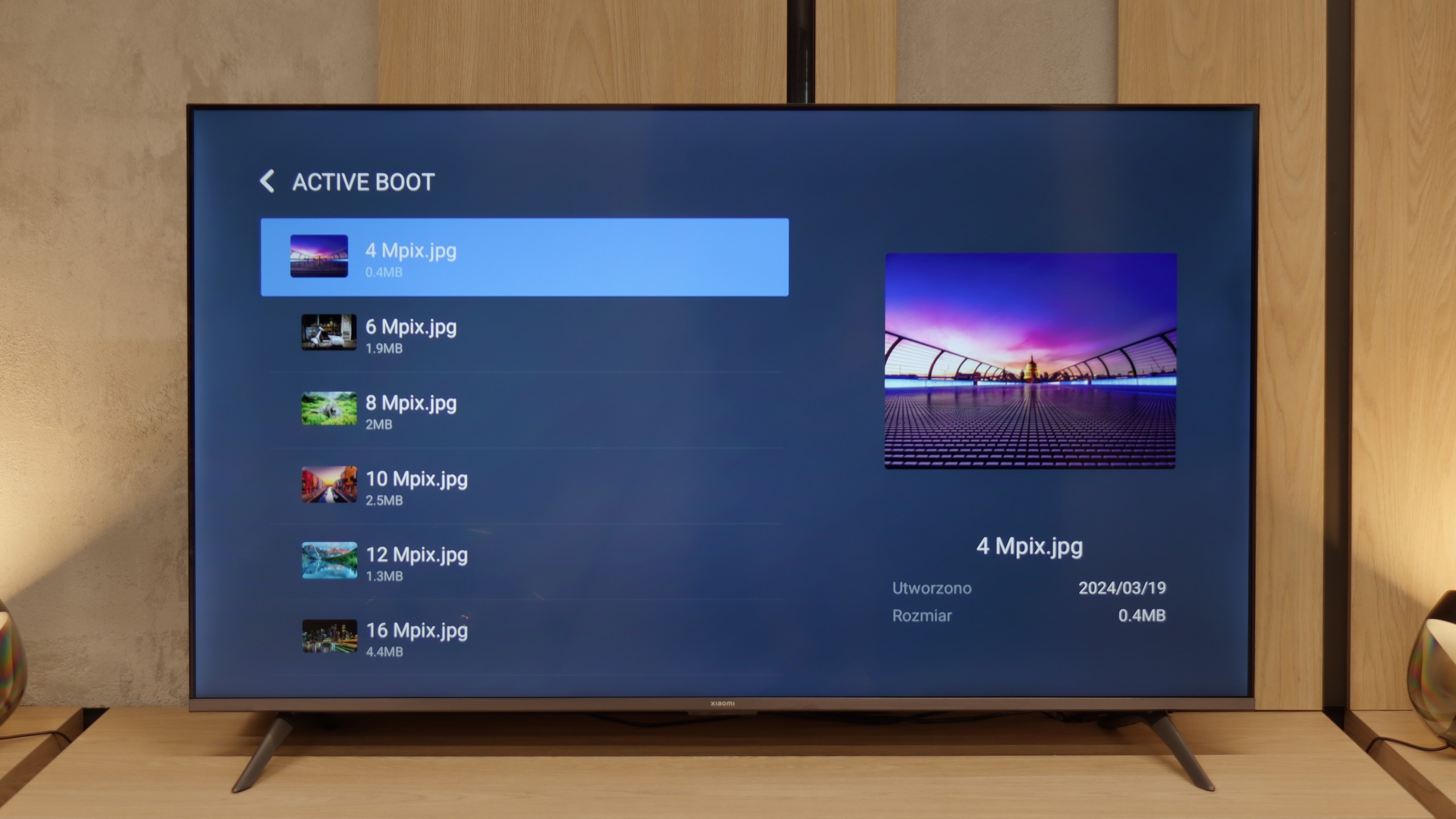
The default media player on the Philips PUS8079 offers a broad range of capabilities but it has some limitations. It supports nearly all video formats, with notable exceptions like Dolby Vision and the less commonly used .asf format. However, it struggles with the H.265 HEVC codec at high bitrates and does not support .sub subtitle files, which are fairly popular. For photos, the player performs reasonably well, but it lacks support for certain resolutions and formats, such as HEIC, which is commonly used by Apple devices. In terms of audio, the player excels and cannot be faulted. Unfortunately, due to system limitations, there is no option to expand its functionality, so users are limited to the features provided by the manufacturer.
The built-in media player in Xiaomi A Pro 2026 is a real enigma. On one hand, it plays most popular audio and video formats without major issues. On the other hand, it can stumble over basic things like Polish letters. Files with characters like ą, ł, ć, or ś in their names often do not want to open or are displayed incorrectly. It looks strange because we supposedly have codec support, yet when it comes to simple matters related to the alphabet, the television just gets confused. Fortunately, this is not a huge problem, as thanks to Google TV, we can simply install another player, such as VLC. Then the issue with Polish letters disappears completely, and using multimedia becomes hassle-free.
Apps
6.2/10
9.6/10














































Sound
5.1/10
5/10
- Maximum volume-81dB
- Dolby Digital Plus 7.1
- Dolby True HD 7.1
- Dolby Atmos in Dolby Digital Plus (JOC)
- Dolby Atmos in Dolby True HD
- DTS:X in DTS-HD MA
- DTS-HD Master Audio
The best thing about the sound system in the Philips PUS8079 is that it is present. Unfortunately, there is virtually no midrange or bass, and the high frequencies are somewhat unpleasant. Interestingly, the television does include a full set of essential audio codecs, including Dolby Atmos and DTS-HD Master Audio, making it easy to connect to a home theatre system.
Last year, the Xiaomi A Pro 2025 surprised us with really decent sound for a television in the super budget segment. Unfortunately, this year's edition – the A Pro 2026, has let us down across the board. The sound resembles the impression as if the device was playing underwater: flat, devoid of any bass or depth. The only plus remains the wide support for audio formats such as Dolby Atmos or DTS:X, but in practice, it doesn’t change much. If you're considering this television, you should immediately add a soundbar to the set, because without it, the audio experience will be quite disappointing.
Acoustic Measurements
No acoustic data
81dBC (Max)
75dBC


